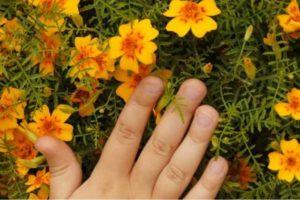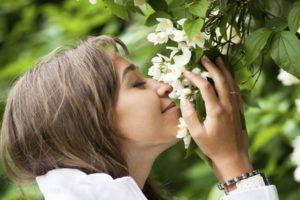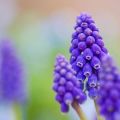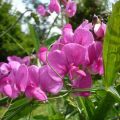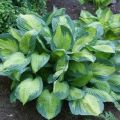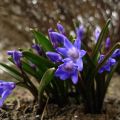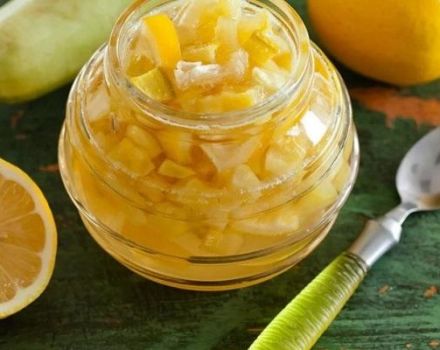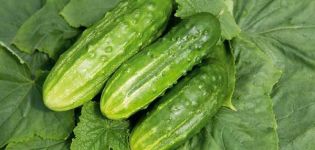Planting and caring for the dicenter in the open field, description of varieties and cultivation
Many cultivated plants, such as gladioli and marigolds, look great in garden plots in early spring, but they are quite ordinary. There are often times when the desire to diversify your backyard plantings does not leave for a long time. In this case, it is worth looking for new copies. The ideal solution would be the dicenter. With a careful study of the rules for planting and caring for this beautiful culture, in early spring, you can decorate the garden with numerous inflorescences of delicate and amazing flowers in the form of a heart of a beautiful shade.
Description and features
The birthplace of the dicenter is Japan, although according to many sources it is considered a European plant. In 1816, high society in Europe instantly became interested in the brightness of shades and the unusual shape of the dicenter. The second name of culture is a broken heart. As the legend says, the girl Jeanette fell in love with a beautiful young man and was looking for all kinds of ways to meet. One day she saw him with another woman who was his bride. Her heart burst with pain, the girl fell, and a flower grew in that place.
There are many varieties of dicentra, among which there are low-growing varieties that do not exceed 15 cm in height, and tall ones, up to 1 m in length. The dicenter is distinguished by a fleshy long rhizome that goes deep into the soil. The plant is adorned with beautiful pinnately dissected foliage, painted green with a bluish tint.
Interest in the dicenter of many gardeners arose due to the unusual shape of the bud in the form of small open hearts twisting down on a thin pedicel. Even from a slight gust of wind, the flowers sway.
Kinds
There are about 20 types of dicentra, of which only 10 are cultivated by people for decorative purposes. The most popular varieties include these.
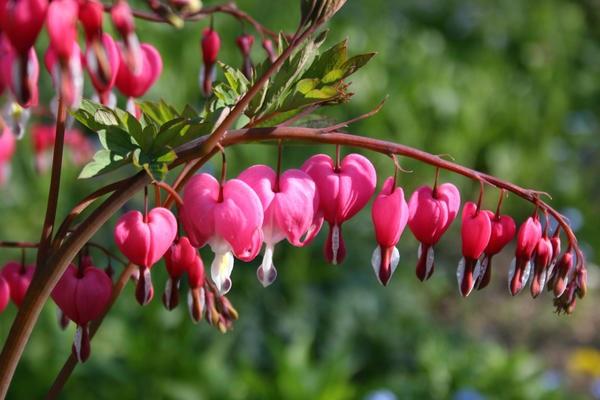
Gorgeous
Perennial, reaching only 20 cm in height. It has fleshy leafless shoots and leaves, consisting of small lobes with a jagged edge. Flowers are collected in 7-15 clusters in racemose inflorescences with pink outer petals. Dicenter blooms in May, it lasts less than a month. The buds are collected in small racemose inflorescences. Leaves of different shades of green, depending on their location on the stem.
Beautiful
Dicentra blooms throughout the summer, from the first days of June to early September.A low-growing species that reaches no more than 40 cm in height. The length of the inflorescence ranges from 10 to 15 cm. They contain small pinkish-purple flowers with a diameter of 20 mm. The leaves have a finger-like shape, a bright green tint and a slightly bluish surface.
Exceptional
A remarkable feature of the dicenter is that the leaves have a gray-blue tint and in their shape resemble the leaf plate of a fern. The flowers, collected in long inflorescences, have various shades, ranging from white to dark purple. The dicenter pleases with flowering from mid-May, which lasts 85-90 days.
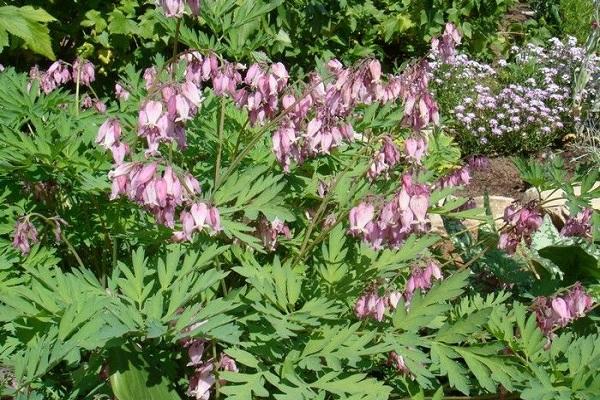
Climbing
A variety of dicentra, which has a liana-like shape, flexible branches up to 2 m in size. The mechanical tissue of the stem is poorly developed, so it spreads along the ground or climbs on various supports. The leaves are trifoliate, inflorescences are white or yellow. Dicenter blooms in June and before the first frost.
Hood-nosed
A low-growing type of dicentra, which grows to a maximum of only 15 cm. Flowers collected in racemose inflorescences with a minimum height of 8 cm have delicate shades of white and pink. This type of dicentra has found wide application in the pharmaceutical industry due to the content of a significant amount of alkaloids in the leaves.
Canadian
It belongs to the undersized species, since it grows no more than 25 cm. The leaves are near the root and have a bluish color, keep on long petioles. Attention is drawn to the flowers, collected in inflorescences, painted white with a pink tint. The blooming of the dicenter begins in April, its duration is short, only a month. It is used as a decoration not only for the garden, but also for the balcony.

Vagrant
A small plant only 10-20 cm tall with a short rhizome. The inflorescences are large, more than 15 peduncles develop on one representative. The color of the buds is pink. Dicenter blooms from the first decade of July to the end of September.
Popular varieties
Dicentra boasts the following varieties, which are preferred by most gardeners.
Alba
The perennial has gained popularity due to the abundance and duration of flowering and undemanding care. Ornamental dicenter can grow over 1 m in height. Flowering occurs in late spring and lasts for a month.
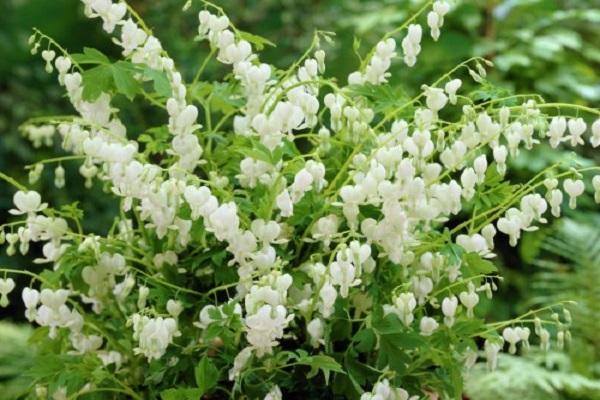
Gold Hart
The dicentra variety is distinguished by the presence of a golden shade of leaves and delicate pink flowers, located along the entire length of high stems. The bush itself is spreading due to the strong branching of massive thick leaves. The cluster of the inflorescence is one-sided. Flowering occurs at the end of May and lasts no more than 20 days.
Aurora
A low-growing cultivated plant reaches a height of only 25-35 cm. The buds are large, heart-shaped, collected in inflorescences. Flowering period: last decade of May - first week of July. The dicenter is decorated with gray leaves, the bush itself looks magnificent.
Bacchanal
Attractive undersized perennial, not exceeding 40 cm in length. The culture is endowed with light green leaves and bright cherry flowers, collected in a racemose inflorescence. Flowering period: June to September.
Burning hearts
A low-growing variety of dicentra with delicate red buds framed by a white border, which gather in inflorescences up to 2 cm in diameter. The plant has pinnately dissected leaves with a silvery bloom. Blooms throughout the season.
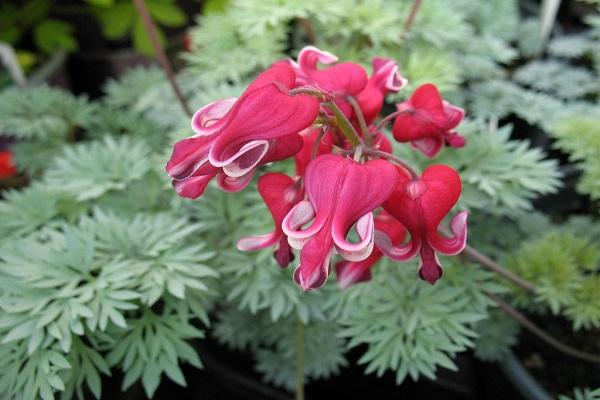
Reproduction
Dicenter can be propagated by such methods as dividing a bush or rhizome, cuttings, seeds.
Dividing the bush
To propagate the dicenter in this way, you need to dig up the plant, clear the root system from the earth. Carefully use a knife to divide the whole bush into 3-4 parts, transplant to the same depth as before.
Cuttings
Select young, high-quality stems or parts of the roots of the dicentra during the summer.Plant the cuttings in moist soil for germination, and send them to a permanent place only next year.
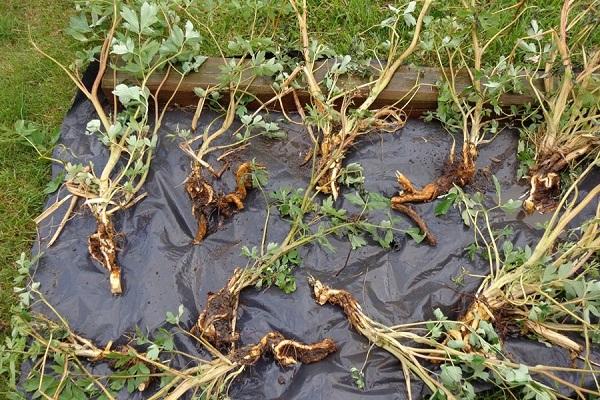
Seeds
This method of breeding dicentra is rarely used. Seeds are difficult to obtain, as they do not have time to ripen, and also have poor germination. For their germination, a temperature of 20 degrees is required. Sow them into the ground in September.
Rhizome division
One of the easiest and fastest methods, which is carried out at the end of the summer. A strong and healthy bush of dicentra immediately after flowering, when its top begins to die off, dig it out, clean the root system from the earth, dry it a little in the sun. With a sharp knife, divide the root into parts so that each copy has at least 3 buds. Cover the cut with ash and plant the material in the soil.
Growing seedlings
Growing dicenter by seedlings has its own characteristics.
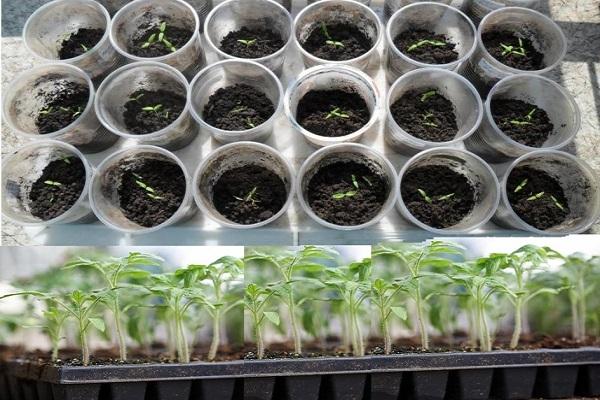
Timing
In mid-January, start breeding dicentra using seedlings.
Soil preparation
Purchase special soil at any flower shop.
How to prepare
Pour soil into the container and moisten a little. Pour the seed material in advance with water and dry it.
How to plant
Press the seeds a little into the soil, spray the soil with mineral water using a spray bottle. Close the containers with a lid and send them for 3 weeks to a room where the temperature is 4 degrees above zero. Make holes in the lid for ventilation.
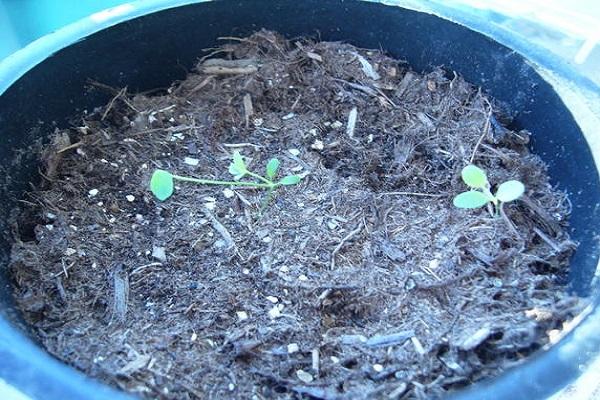
Temperature and light conditions
In early February, place the container in a bright room with a temperature of 20 degrees and place it under a phytolamp. At this stage, proper maintenance should be organized, including regular ventilation of the soil and its moistening using a spray bottle. In the last days of February, seedlings are formed, water them through the pallet and continue to keep under the phytolamp.
Dive
In April, the sprouts will grow and form 3 true leaves. At this time, it is required to carry out a pick, seating each specimen in separate pots.
Hardening
At the beginning of May, the seedlings are recommended to be taken out into the street, gradually increasing the duration of the session, in order to get used to the conditions of its further growth. Plants should not be placed in the sun, it is better to place them in the shade.

Landing in open ground
Plant the plants on the flowerbed in August, choosing a shaded place in the garden with light soil without stagnant water. In the presence of clayey soils, add sand and peat, and arrange drainage at the bottom of the hole.
When planting in a hole, plant 2-3 plants to form a lush bush. The distance between the planting units should be at least 50 cm. Carefully cover the seedlings with soil substrate, fertilized with compost and wood ash. At the end of planting, water the plants and protect from the sun for several days.
Care
Caring for the dicenter in an open-air flower bed will not take much time and effort, since the plant is unpretentious.
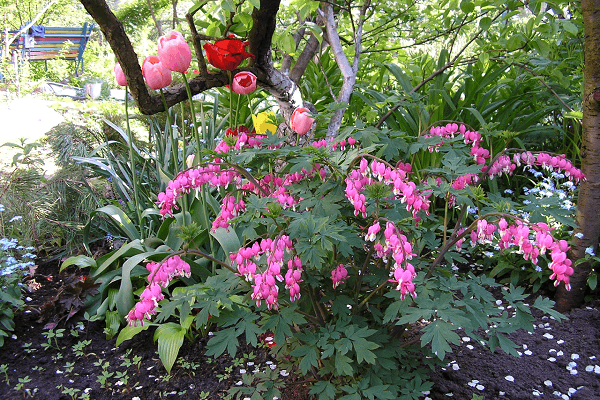
Watering
Water the dicenter as needed. If the summer is rainy, then irrigation can be abandoned. Just take into account that with a lack of moisture, the foliage becomes smaller and the buds fall off.
It is recommended to shed soil to the full depth of the roots - at least 60 cm.
Top dressing
Feed the dicenter three times a year before and after flowering and before wintering using long-acting fertilizers, since they can reduce the need for nutrient input to a minimum.
AVA Universal 2-3 years
Granules are poured into the soil in the amount of 1 tbsp. l. under the bush. This fertilizer provides the perennial with a complex of elements for several years.
Osmocote Release Form
Available in large peas coated with biodegradable resin. Apply once a year in the spring.
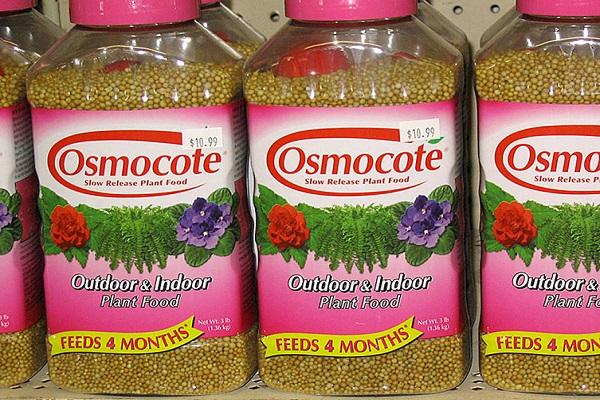
"Bazakot Plus"
Complex granular fertilizers with controlled release of nutrients with a duration of 3, 6, 9 or 12 months.
Bona Forte Universal
Regulates the amount of nutrient solution in the root system. The fertilizer contains silicon, which, along with nitrogen, phosphorus and potassium, is a necessary element for the full development of the dicenter.
Plantacote
Bio-soluble membrane-coated granules provide controlled release of nutrients. Increase the decorative and presentable culture.
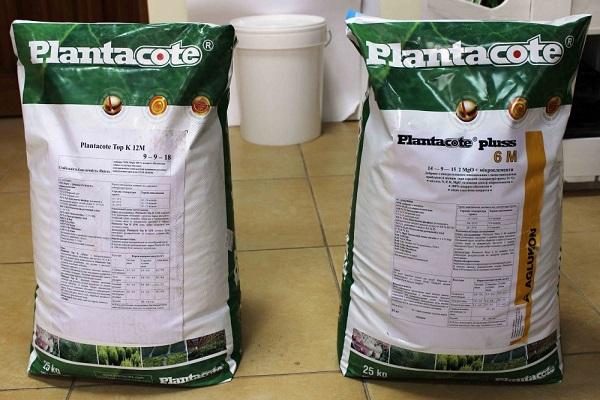
Pruning
Pruning the dicentra should be carried out at the end of the growing season, cutting off all the shoots to the very root.
Mulching
For mulching, apply humus, mown grass, sawdust. With the help of such mulch, you can avoid drying out the soil, and also enrich it with nutrients such as nitrogen, carbon dioxide.
Preparing for winter
After pruning, cover the plant with spruce branches, and in winter, using a thick plastic wrap.
To ensure the proper climate inside the shelter, it is better to use only non-woven fabric.
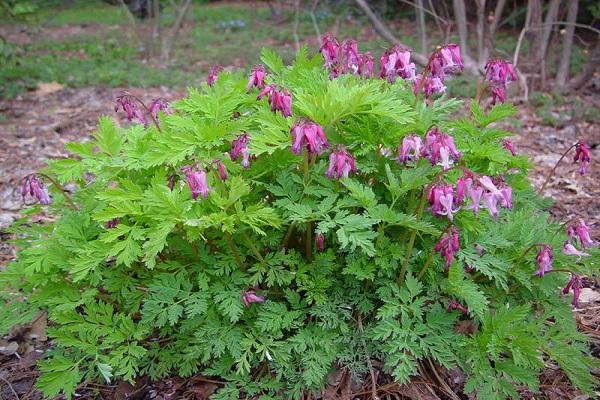
Questions for novice florists
Answers to frequently asked questions of novice florists:
- Is it possible to grow dicentra in flowerpots and pots? Yes, but select the overall flowerpot depending on the size of the root system of the bush.
- With what plants to plant the dicenter? Tall varieties get along well with coniferous plantings, and low species with saxifrage and primroses.
- What pests affect the dicenter? Most often these are aphids, ants and bears.
The dicentra is especially popular all over the world, since the perennial is considered everywhere a symbol of love and devotion, as it is associated with many romantic legends. And its delicate colors, graceful shape and simple cultivation have made the plant one of the garden's favorite flowers.
